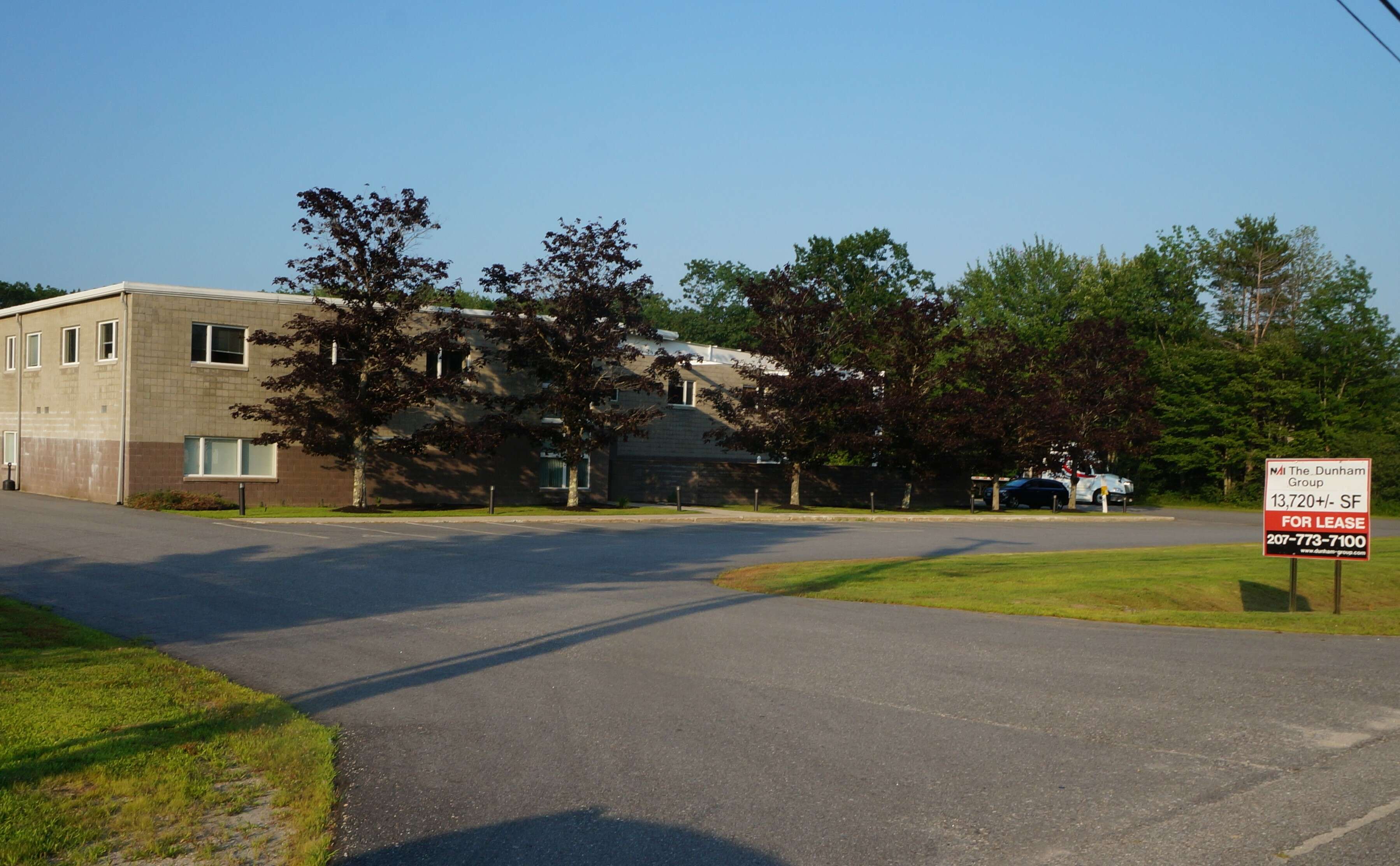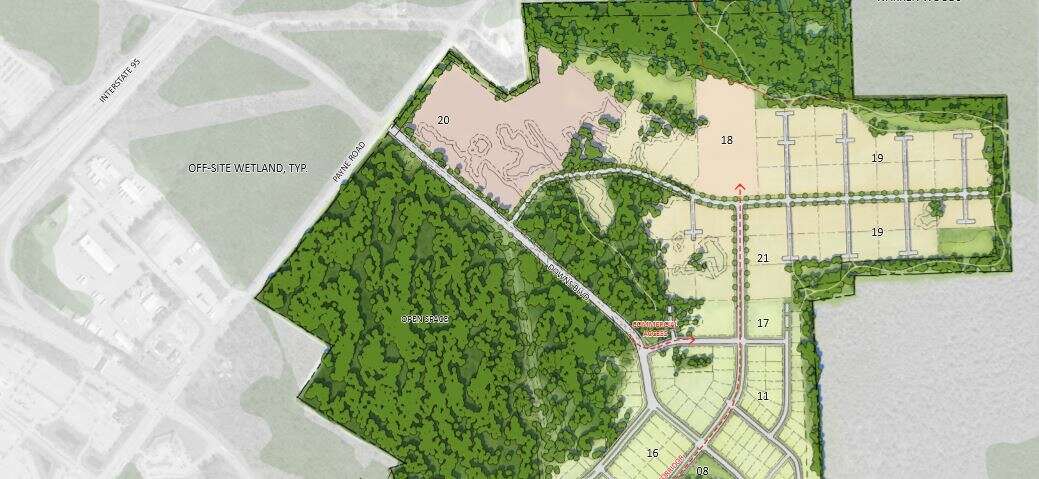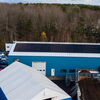
Inside the still-booming southern Maine industrial market
When the industrial real estate market slowed at the end of last year, those in the industry thought the years-long trajectory of rising prices and shrinking inventory was finally slowing.
The slowdown, however, was a blip, and the greater Portland industrial market is still on a tear, Justin Lamontagne, broker with NAI The Dunham Group, told Mainebiz this week.
"Activity has increased and sales/leasing pricing along with it," Lamontagne said. "The numbers and our transactional activity suggest our bull-run in the industrial market is not over. Far from it, actually."
At issue is available inventory, with a vacancy rate too low to meet demand and construction prices rising.
"The big question is how much more new inventory will be added in the coming years and how it will impact our market," he said.
At the end of last year and beginning of this year, listings were starting to sit longer and pricing plateaued, Lamontagne said. Brokers felt things pick up in the second quarter of this year, but Lamontagne wanted to see if it was for real.
The result, and the fact that industrial clients and property owners had been asking how the market looked this year, was solid enough to prompt a Mid-Year Industrial Review, updating the 2018 market review issued in January. The findings are "the first 'correction' we’ve seen since we began tracking market conditions in 2011," the review says.
The review shows 584 buildings with a total market size of of 18,932,665 square feet in southern Maine, with 491,489 square feet of direct vacancy, for a total vacancy rate of 2.6%.
At the close of 2018, greater Portland’s industrial market overall vacancy hovered at 3.5%, lease rates were plateauing at an average of $6.50 square feet, triple net, and sales prices had climbed to an average of $65 square feet, according to the review.
"Several vacancies sat longer than anticipated, lease pricing seemed to get significant tenant pushback at the $7 square feet NNN level," it says. "Furthermore, a small handful of speculative industrial projects languished empty longer than developers had prepared for."
While 2019 got off to a slow start, things began to pick up in the spring, and Lamontagne said that suggests businesses are still growing and looking for expanded real estate solutions.
Sales demand for existing inventory also remains at an all-time high, he said. Demand has driven peak pricing well over $100 a square foot.
He said, for instance, the last two properties he put on the market lasted a total of 10 days and both had multiple offers.
"Appraisers are starting to catch up, but it isn’t unusual for these transactions to appraise under contract pricing," he said. "This is forcing buyers to come out of pocket as sellers maintain significant leverage and aren’t in a position of needing to negotiate."
Nationally, vacancy rates are just below 5%, which is a near-historic low, according to Jones Lang LaSalle, which tracks market statistics. It also said that "significant economic and trade demands" could cause a pull-back in leasing activity nationally, and that new construction in the industrial market is up 4% nationally from the previous quarter. JLL's numbers are based on the first quarter and were published in May.

Geography, labor pool are king
Lamontagne said that tertiary markets in particular nationally are seeing new development as businesses are attracted by cheaper land, tax incentives and interstate connectivity to find employees, many businesses "choosing labor pools over geography."
In the Maine market, geography is still king, with southern Maine being closer to many of the businesses' markets. But that's also where the labor pool is.
One hot spot where many significant transactions have recently taken place is the western Portland-eastern Westbrook area off Route 22, home to IDEXX Laboratories and other big companies. Several industrial parks have also sprouted in recent years.
One significant transaction in the area recently was the sale of two buildings totaling $162,580 of industrial space, sold as an investment for $11.5 million by Lake Creek Properties LLC to Spiller Drive LLC, brokered by Dunham.
The Spiller Drive property is within shouting distance of IDEXX and multiple other industrial parks and properties on the Portland-Westbrook line, the County Road one close by on Route 22.
"Commercial anchors like IDEXX, WEX, UNUM, etc. are great for our local economy and certainly are a draw for other like-minded companies within those industries," Lamongtagne said. "However, I think our industrial development is driven more by access to the major interstates, I-95 and I-295 as well as strong labor pools. Obviously, Portland and Westbrook check those boxes."

End users driving new builds
Inventory is being added, despite the expense. Sam LeGeyt, also of Dunham, says in the review that although construction costs have skyrocketed, interest rates have softened, and buyers are still hesitant to pay a market premium of around $100 a square foot for industrial space when they can build what they want.
Dunham's survey estimates that almost 300,000 square feet of new industrial space has been added to the greater Portland market in the last 12 to 24 months. Lamontagne and LeGeyt said they expect the trend to continue.
"I was concerned towards the end of last year that the window for new industrial construction was closing," Lamontagne told Mainebiz. "That appears not to be the case, which is good news for industrial tenants and end users. The reported interest at The Downs site [in Scarborough], for example, is indicative that the numbers can work for building new."
LeGeyt said the majority of new construction industrial projects are being driven by end users.
The Downs reported last week that only seven of a total 57 lots in the industrial area of the mixed-use development on U.S. Route 1 are still available.
Roccy Risbara, a developer of The Downs, said last week that the industrial phase of the project quickly attracted end users. "Including out-of-state companies that are being 'priced out' of more expensive cities," he said.
Ducas Construction is one of those businesses, relocating to The Downs from elsewhere in Scarborough, according to developers Crossroads Holdings LLC.
Owner Pete Ducas looked at multiple properties before deciding to buy land and build, LeGeyt said. The move will allow the company to customize the property to its needs, Ducas said in the industrial review.
"Other industrial businesses are making that same hard decision," LeGeyt said.
New speculative projects require a minimum $10 a square foot, triple net, in order to be feasible; owner-users can pay more, LeGeyt said. "But with existing inventory asking rates still between $5 to $7 [a square foot, triple net], the divide is still strong enough to inhibit real growth," he said.
Lamontagne said that in Saco in the past calendar year, more than 250,000 square feet of inventory has been added, but even with the added square footage, the vacancy rate in the city is less than 2%.
LeGeyt said that supply and construction costs are inhibiting business growth in southern Maine. While some businesses can build their own space, many Maine-based companies can't afford new construction and are making do with either multiple smaller locations, or not making a move, he said.










0 Comments